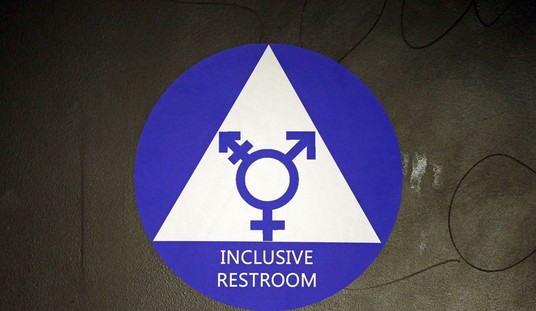Sporting her usual bubbly demeanor, the midwife strolled into the kitchen and announced she had a special gift for the new mom. She held out a clear bag filled with hundreds of capsules. The emotion on my daughter-in-law’s face fell somewhere on the scale between utter disgust and sheer astonishment.
“It’s your placenta!” she explained.
“I dried and capsulated it. It works wonders for post partum depression. Take two everyday as a precaution, or just when you feel the need.”
As repulsive as it sounds, rumors of the benefits of eating one’s own placenta have floated around the natural mothering crowd since the days when we still called them hippies. Believe it or not, today many of these trends are making a comeback.
January Jones, who plays Betty on Mad Men, doesn’t have a problem eating her afterbirth, or apparently discussing it in public.
She told People.com:
Your placenta gets dehydrated and made into vitamins. It’s something I was very hesitant about, but we’re the only mammals who don’t ingest our own placentas.
Old hippies have spawned a new hybrid generation of parents that’s three parts high-tech and one part organic. The new “Crunchy” or “Natural Mamas” have inherited some ideals once considered “out there” for we Boomers, like nursing and laboring in water.
The next four extreme trends could become the new norm.
4. Sick Parties
Literally.
Some parents actually throw their little pumpkins a chicken pox party. The intention is to come home sick — infected with the virus.
From Page Six Magazine:
It’s 2 p.m. on a Saturday and Angie Smith*, a 36-year-old graphic designer, is sitting at a Princeton, N.J., kitchen table with four other parents, eating tea sandwiches and discussing the difficulty of getting their children into competitive kindergartens. Meanwhile, in the living room, six kids huddle on the couch, watching Finding Nemo. Samantha*, Angie’s 3-year-old daughter, is still wearing a frilly pink dress from an earlier game of dress-up and laughing with her pal, John, 4. Their parents pass around Blow Pops and encourage the kids to share them. Indeed, this is not a normal playdate—John has a fever and his face is a constellation of red dots smothered in calamine lotion. Welcome to a chicken pox party.
I get it. I really do.
From the first time I heard of the varicella vaccine, I thought it was not a good idea to make it compulsory. Before you hit the comment button, let me explain. My initial reaction was that this disease becomes more devastating the older you get. For pregnant women the illness can become deadly.
From the CDC Website
Pregnant women who get chickenpox are at risk for serious complications. For example, 10-20% of pregnant women who get chickenpox develop pneumonia, with the chance of death as high as 40%.
If a pregnant woman gets chickenpox while in the first or early second trimester of pregnancy, there is a small chance (0.4 – 2.0%) that the baby could be born with birth defects known as “congenital varicella syndrome.” Babies born with congenital varicella syndrome may be of low birthweight and have scarring of the skin and problems with arms, legs, brain, and eyes.
Newborns whose mothers develop chickenpox rash from 5 days before to 2 days after delivery are at risk for chickenpox shortly after birth, with the chance of death as high as 30%.
So it seemed to reason that an early infection in a healthy child would yield the safest long-term results. Also consider, as a mother I make decisions only for my family. I don’t make health policies for the vast population.
I raised nine children back in the dark ages, before the creation of this vaccine. All of us got chicken pox. After the initial spotted surprise, we counted the days on the calendar and marked off when the rest of the children would get sick. By taking note when they were contagious, we would take care not to expose others. While waiting for the kids to show their spots, we would stock up on supplies to keep them comfortable and the blisters clean.
It’s common courtesy to put the word out to friends and family when someone comes up with chicken pox. Then moms can make a decision whether or not to expose their child to ours. That decision was usually based on age and health, not a party invitation.
The point was always to allow the children to get it at a time when they had the best possible advantage of healing with minimal discomfort.
Nonetheless, I don’t like the concept of a chicken pox party — especially the practice of passing around infected lollipops. There’s just something inherently wrong about that. There’s a careless, c’est la vie air about it.
While I am a proponent of natural immunity, I wouldn’t throw a party over it.
3. Need it to stop crying? Become Baby Wise.
After the birth of my first two children I convinced myself they were such “good babies” because of my natural parenting skills.
Then along can number three and I repented.
That child threw out all my theories. That child bawled around the clock from the first night and didn’t stop for 10 months. I wanted to pull my hair out.
Unfortunately baby books don’t tell parents that caring for infants can be hard, and all-consuming — for a season. Who wants to buy that?
Nope, parents want answers. Books that claim to have golden tickets sell. Enter On Becoming Babywise by Gary Ezzo and Robert Bucknam, M.D.
The authors offer what every new parent wants: a full night’s sleep. The Ezzo philosophy of child rearing, especially when it concerns eating and sleeping, is entirely parent directed.
Newborns are “trained” to live by a set schedule that centers on the needs of the family rather than the baby. Infants aren’t allowed to “manipulate” their mothers into feeding or holding them.
The book has produced a legion of loyal, even fanatical, followers, with a devastating wake of frail babies.
Matthew Aney, M.D. writes:
…On Becoming Babywise, has raised concern among pediatricians because it outlines an infant feeding program that has been associated with failure to thrive (FTT), poor weight gain, dehydration, breast milk supply failure, and involuntary early weaning. A Forsyth Medical Hospital Review Committee, in Winston-Salem N.C., has listed 11 areas in which the program is inadequately supported by conventional medical practice.The Child Abuse Prevention Council of Orange County, Calif., stated its concern after physicians called them with reports of dehydration, slow growth and development, and FTT associated with the program. And on Feb. 8, AAP District IV passed a resolution asking the Academy to investigate “Babywise,” determine the extent of its effects on infant health and alert its members, other organizations and parents of its findings.
The American Academy of Pediatrics put out a media alert warning parents:
…[T]he American Academy of Pediatrics (AAP) reaffirms its stance that the best feeding schedules are ones babies design themselves. Scheduled feedings designed by parents may put babies at risk for poor weight gain and dehydration.
It’s not unnatural or wrong to want a good night’s sleep. It’s hard to trust your own instincts. But trust them over someone that promises to have the corner on trouble free babies.
2. Surgical Birthing
The memory of the birth of my first child is foggy. Not because it was back in 1977, but due to the state-of-the-art expert medical care I received. As Jennifer Block, author of Pushed: The Painful Truth about Childbirth and Modern Maternity Care, puts it, birth has become an emergency not an emergence.
WARNING, graphic images:
http://www.youtube.com/watch?v=A4EiNHlqzRU
In the 20 years I spent giving birth (approximately one child every two years), I experienced firsthand the evolution of birthing trends and care models. In the seventies, we had evolved to a more natural hospital experience than our mothers in the fifties.
However, during the course of labor a woman could expect to be catheterized, shaven, and tied down to a metal table with leather straps — arms down, legs up. She got an enema, an IV, internal monitor, and an episiotomy — but no food. All softened by the drug-induced submissive trance also known as “twilight sleep.”
The backlash against this medical backdrop was the home birth movement. Expectant parents began educating themselves on the birth process. The movement transformed hospital practices to lure unhappy patients back into a “home-like” atmosphere. The delivery room vanished, and beautiful bedrooms fully equipped with Jacuzzis appeared. Dim lights and soft music accompanied by the sound of the new daddy’s voice saying “breathe deep” replaced the frantic hallway ride down to the cold delivery room.
Now the pendulum has begun its forceful swing back. Those carefully remodeled birthing suites are filled with women plugged into drips, machines and monitors. The nine to five birthing model has arrived.
Over one-third of American women giving birth today will do so by cesarean section. The trend is now elective cesarean — and why not? Why wouldn’t a woman want to circumvent all the torturous interventions of the birthing process and get it over with?
Because, although it’s fast becoming a common practice, it’s not as wonderfully safe as we have grow accustomed to believing.
Block explains:
A CDC researcher’s 2006 study of 5.7 million U.S. births found that infants born by cesarean with no medical risk factors were nearly three times more likely to die within the first month of life than those born vaginally.
The acceptance of “surgical births” otherwise known as elective cesarean has signaled a new era of medicalized birth is once again upon us. Birthing women today have conceded much ground in personal freedom within the birthing process.
The woman’s right to choose is quickly becoming a fight to choose to give birth free from the intrusive hands of mandatory medical interventions.
And just one more WARNING for some graphic content on the last page…
1. Birth Pictures.
That is not my picture.
All my birth pictures got destroyed decades ago. They kept mysteriously appearing in the worst places at the wrong time.
Capturing the momentous and enchanting event of the birth of a child seems to be a good idea when the wonder of it all is still fresh. When the magic of the moment wears off the pictures transform into something you don’t want your kids to see.
Trust me, they will find them.
Discovering birth pictures floating around in the back of a drawer ten years later is bad enough, but discovering them floating around the Internet? No thanks.
My prediction: This trend will soon die of embarrassment.













Join the conversation as a VIP Member